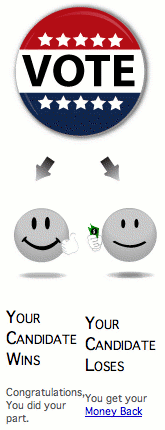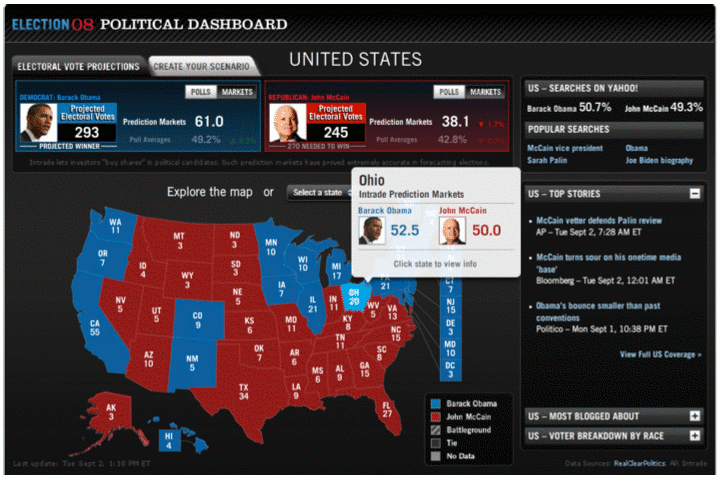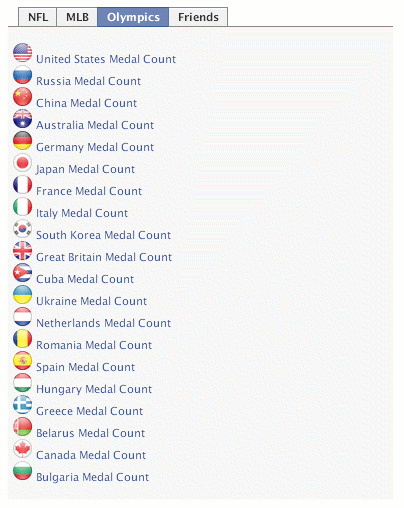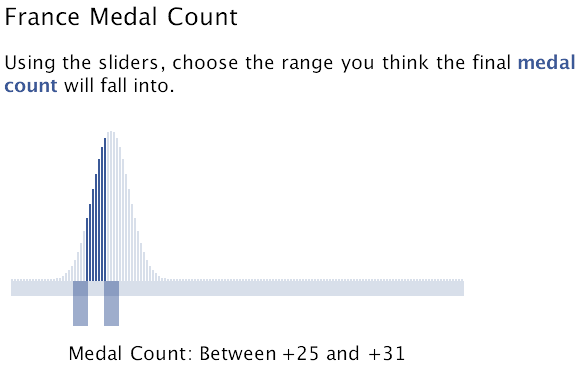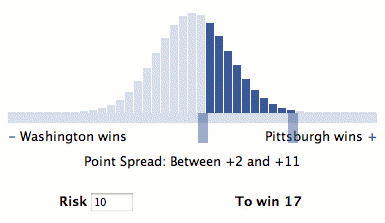The debate over how to report prediction market prices may seem to arise only because so many of the markets have low liquidity. If prediction markets were more liquid, the logic goes, then it wouldn’t matter if observers reported the last trade price, the average of the last several prices, or the bid-ask spread: they’d all be roughly the same. Indeed, in the extreme case of an “infinite liquidity” automated market maker, they are all the same.
Lance encountered the problem when a few rogue trades caused the colors on our electoral markets map to swing in what would seem to be irrational ways, briefly painting California red for McCain, for example.
However yesterday proved that even one of the most traded stocks on one of the largest volume financial exchanges in the world can suffer from bizarre trading oddities that make reporting meaningful prices an exercise in ad hockery.
It seems that Google’s stock gyrated wildly near the close of trading in entirely inexplicable ways that seem impossible to rationalize, and all this despite enormous volume traded. From SeekingAlpha:
[Here are] the official [NASDAQ] datapoints: share volume of 12 million shares (that’s about $5 billion), more than double the normal amount; an intraday high of $489, and — most improbable of all — an intraday low of just 1 cent per share.
What I found most incredible is that NASDAQ actually rewrote history in response:
Sep 30, 2008 17:01:02 ET Pursuant to Rule 11890(b) NASDAQ, on its own motion, has determined to cancel all trades in security Google Inc Cl – A “GOOG” at or above $425.29 and at or below $400.52 that were executed in NASDAQ between 15:57:00 and 16:02:00 ET. In addition, NASDAQ will be adjusting the NASDAQ Official Closing Cross (NOCP) and all trades executed in the cross to $400.52. This decision cannot be appealed. MarketWatch has coordinated this decision to break trades with other UTP Exchanges. NASDAQ will be canceling trades on the participant’s behalf.
I had no idea that stock exchanges canceled trades “just because”. Barring system error, this seems just plain wrong — certainly worthy of serious outrage from traders. If someone agrees to trade at a wildly irrational price that’s their own problem and they should have to live with it.
Apparently it’s not only possible, but common. On the same day NASDAQ canceled trades in ROH deemed out of bounds:
Sep 30, 2008 17:14:37 ET Pursuant to Rule 11890(b) NASDAQ, on its own motion, has determined to cancel all trades in security Rohm and Haas Company (ROH) at or above $73.20 and at or below $68.93 that were executed in NASDAQ between 15:57:00 and 16:02:00 ET. This decision cannot be appealed.
Suddenly our hack fix to the electoral markets map* and the various controversial revisions at intrade and betfair [1, 2] don’t seem quite so crazarbitrary in comparison.
| *We now report the last trade price only if it falls between the current bid-ask spread, otherwise we report the bid or ask price, whichever is closer to the last price. After all, if the last price falls outside the bid-ask boundaries, it no longer reflects current market sentiment. |
